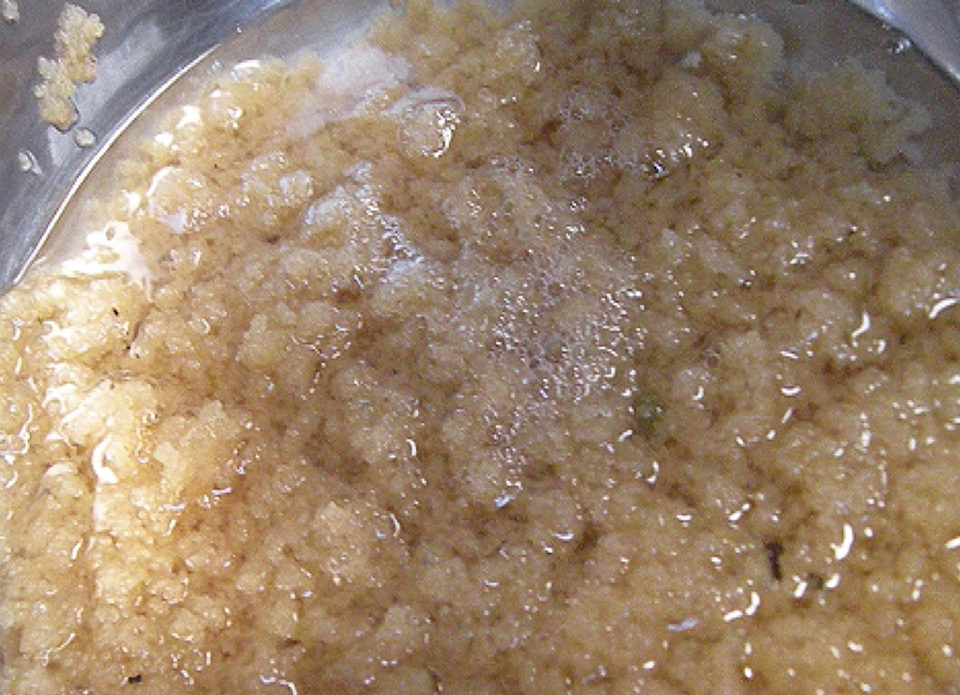Method could help reduce dependence on wild seed stock

The common carp is a multiple breeder that produces adhesive eggs. After sex play, the female’s eggs, laid on submerged weeds or other suitable substrate and held by the eggs’ adhesive, are then fertilized by the milt released by a male. On contact with water, the eggs immediately assume the shape of round balls before being fertilized. With the passing of time, agglutination increases further. This also happens with Pangasius sutchi, indigenous catfish and some ornamental fish that lay adhesive eggs.
This transformation of eggs is due to the interaction of the adhesive or gumming substances with water. In both normal breeding and hatcheries, the sperm can fail to penetrate the adhesive covering surrounding the eggs and fertilize the eggs only at the periphery of the egg balls. This results in decreased fertilization and poor availability of hatchlings. Due to the shortage of eggs and fingerlings, farmers are not interested in culturing these fish.
Degumming eggs
To increase fertilization rates, several procedures have been developed for degumming eggs. Some authors advocate the use of tannin in a solution of 15 g tannin/10 L water. However, tannin is poisonous to fish eggs, and its prolonged use can generate various negative impacts. An alternative method is the use of a urea-sodium chloride solution, but this approach is also not effective and there is potential for contamination. The use of amul milk at a solution of 200 g/10 L water is an effective, but costly approach developed by N.R. Chatterjee and co-workers.
New procedure
In field studies to find an inexpensive, yet effective treatment to remove adhesive from eggs, the author discovered that some soils from a certain region of Bengal, India, proved effective in removing the adhesive component.
Eggs and milt were collected through stripping followed by fertilization by use of a feather. The fertilized eggs were placed in a tray containing 10 L of water into which a handful of the soil was mixed.
The water/soil solution removed the adhesive glue from eggs produced by two successive games. Individual eggs separated from each other, and fertilization was enhanced.
After through mixing and separation of individual eggs, the eggs are stocked into the tank for further development. The released mixture adds a yellowish tint to the water.
Perspectives
Although common carp is an important species for stocking in multispecies operations, farmers generally do not consider the species for more concentrated farming due to the lack of availability of seed. Fish farmers depend mainly on wild seed for stocking carp. Some seed producers in India, particularly in Bengal, also take the risk of common carp seed production through stripping eggs.
The soil-based approach for removing carp egg adhesive to improve fertilization opens a new dimension for standardized seed production that can help increase production. The technology is also being studied with, for which increased fertilization and hatching rates are expected.
Editor’s Note: This article is based on the author’s research to develop methods to increase the seed production of important freshwater fish. This work was considered for the Novus Global Aquaculture Innovation Award, the first of which was presented by the Global Aquaculture Alliance at the GOAL 2013 conference in Paris, France.
(Editor’s Note: This article was originally published in the January/February 2014 print edition of the Global Aquaculture Advocate.)
Author
-
Prof. N.R. Chattopadhyay
Department of Aquaculture
Faculty of Fishery Sciences
West Bengal University of Animal and Fishery Sciences
5no. Buderhat Road
P. O. Panchasayar
Chakgaria, Kolkata 700094 India[109,111,99,46,108,105,97,109,103,64,48,52,101,101,106,114,101,116,116,97,104,99,114,110]
Tagged With
Related Posts

Health & Welfare
Egg saprolegniasis in a commercial sunshine bass hatchery
Fungal growth on the eggs caused by the water mold Saprolegnia spp. is an obstacle to the larval production of sunshine bass. This study confirmed that copper sulfate can be an economical and valuable resource in hatchery management for the control of saprolegniasis on sunshine bass eggs in McDonald jars.

Aquafeeds
A look at phospholipids in aquafeeds
Phospholipids are the major constituents of cell membranes and are vital to the normal function of every cell and organ. The inclusion of phospholipids in aquafeeds ensures increased growth, better survival and stress resistance, and prevention of skeletal deformities of larval and juvenile stages of fish and shellfish species.

Responsibility
Aquaculture effluent partially replaces growing mix for plant production
Aquaculture effluent can be an effective fertilizer in land-based plant production. Research with tilapia utilized dewatered aquaculture effluent (A.E.) as a partial substrate replacement for tomato plant seedlings. Seedling growth decreased when effluent replaced a commercial growing mix at 25 percent or more.

Intelligence
A land grab for salmon (and shrimp) in upstate New York
The operators of Hudson Valley Fish Farm see their inland locale as a pilot to prove that land-based fish farming, located in close proximity to major metropolitan markets, can be successful.


